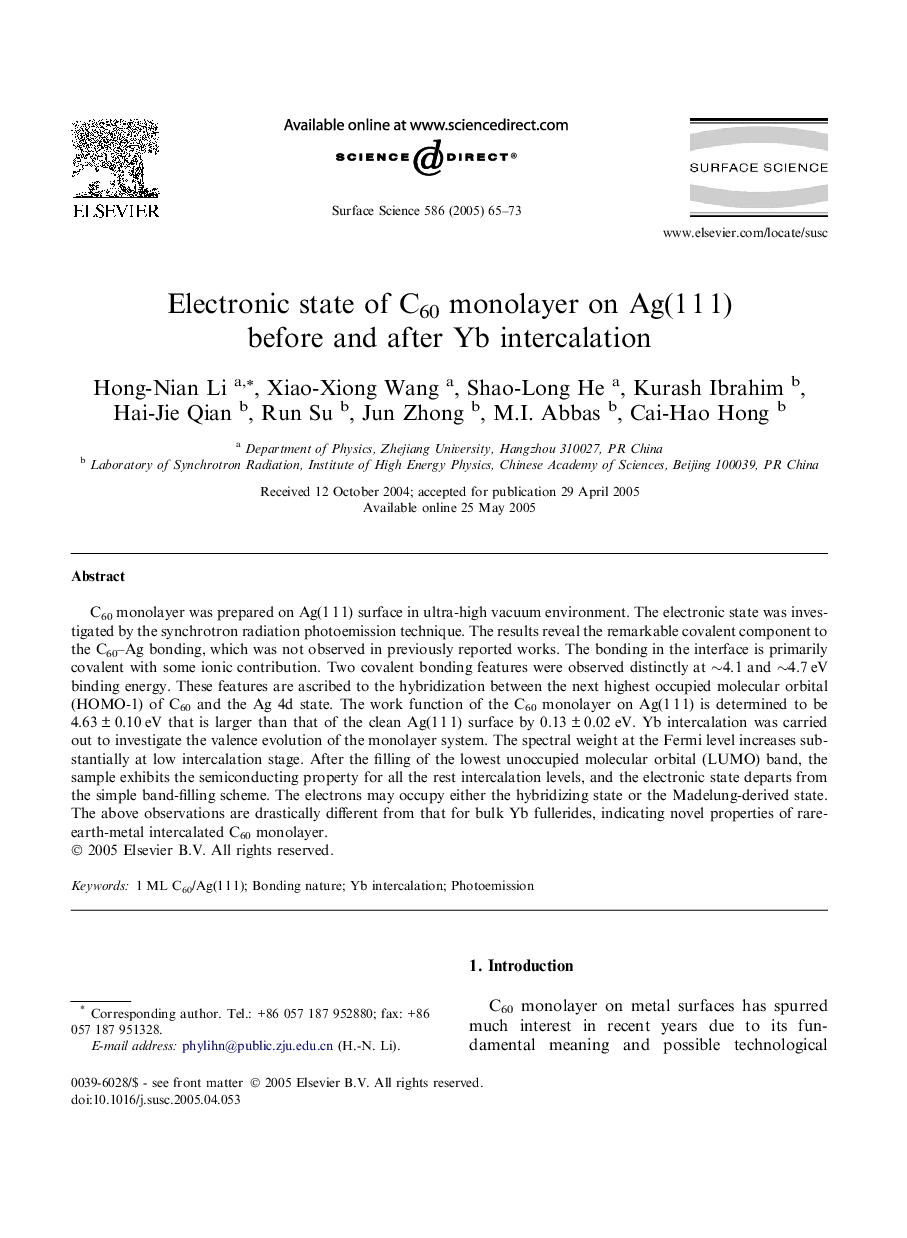| Article ID | Journal | Published Year | Pages | File Type |
|---|---|---|---|---|
| 9595052 | Surface Science | 2005 | 9 Pages |
Abstract
C60 monolayer was prepared on Ag(1 1 1) surface in ultra-high vacuum environment. The electronic state was investigated by the synchrotron radiation photoemission technique. The results reveal the remarkable covalent component to the C60-Ag bonding, which was not observed in previously reported works. The bonding in the interface is primarily covalent with some ionic contribution. Two covalent bonding features were observed distinctly at â¼4.1 and â¼4.7 eV binding energy. These features are ascribed to the hybridization between the next highest occupied molecular orbital (HOMO-1) of C60 and the Ag 4d state. The work function of the C60 monolayer on Ag(1 1 1) is determined to be 4.63 ± 0.10 eV that is larger than that of the clean Ag(1 1 1) surface by 0.13 ± 0.02 eV. Yb intercalation was carried out to investigate the valence evolution of the monolayer system. The spectral weight at the Fermi level increases substantially at low intercalation stage. After the filling of the lowest unoccupied molecular orbital (LUMO) band, the sample exhibits the semiconducting property for all the rest intercalation levels, and the electronic state departs from the simple band-filling scheme. The electrons may occupy either the hybridizing state or the Madelung-derived state. The above observations are drastically different from that for bulk Yb fullerides, indicating novel properties of rare-earth-metal intercalated C60 monolayer.
Keywords
Related Topics
Physical Sciences and Engineering
Chemistry
Physical and Theoretical Chemistry
Authors
Hong-Nian Li, Xiao-Xiong Wang, Shao-Long He, Kurash Ibrahim, Hai-Jie Qian, Run Su, Jun Zhong, M.I. Abbas, Cai-Hao Hong,
